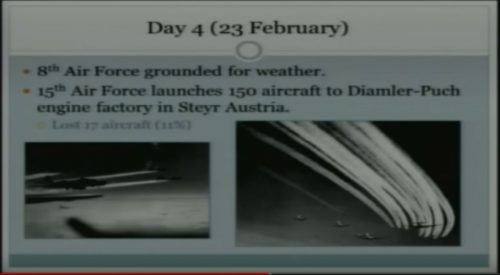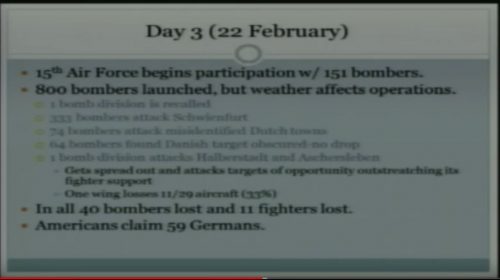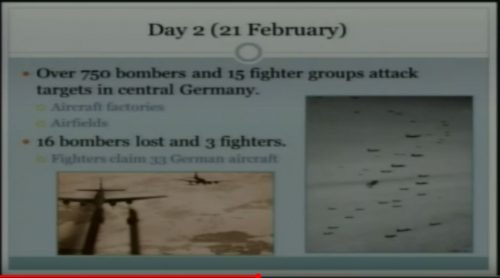Today marks the 75th Anniversary of the fourth day of Operation Argument otherwise known as BIG WEEK. On Wednesday, February 23, 1944 the 15th Air Force went after the Luftwaffe in the skies over Germany — with the 8th Air Force operations grounded by fog — in the battle for air superiority before the Normandy invasion scheduled for June 1944.
Like the previous day, the 15th Air Force lacked fighter escorts.

ETO Strategic Operations
Mission 232: 5 of 5 B-17s drop 250 bundles of leaflets on Rennes, Le Mans, Chartres, Lille and Orleans, France at 21:36–22:32 hours without loss.
MTO Strategic Operations
B-24s bomb the industrial complex at Steyr, Austria. Other heavy bombers are forced to abort because of bad weather; the bombers and escorting fighters claim 30+ aircraft shot down.
For extensive background, see this Wikipedia article, where the passage above came from:
https://en.wikipedia.org/wiki/Big_Week
From the Pre-War “Conveyor-Protector” to Long Range Escort Fighters
One of the most troubling parts of the US Army Air Force “P-51 Narrative” that the “Bomber Generals” pushed after “Big Week” was that the USAAF had learned nothing from the 1940 “Battle of Britain” about the need for fighter escorts.
It turns out that the US Army Air Corps had not missed that obvious point at all. They utterly got that point. In fact, tab #4 for the AAF’s first Air War Plan (AWPD-1) written in August 1941 called for specialized escort fighters. See this link from Ryan Crierie’s web site —
http://alternatewars.com/WW2/VictoryPlan/Air_Force_Requirements.htm
What they did with that insight was utterly squandered by the factional politics of the “Bomber Mafia” between 1940 and the failure of the second Schweinfurt raid on 14 October 1943.
The need to avoid accountability for that failure — like hiding the real range of the P-47D with 150 gallon drop tanks after “Big Week” — was why this institutional lie was told. The motive being to preserve the reputations of General H. H, “Hap” Arnold and a lot of Bomber Generals who founded the independent US Air Force.
And like any other claims of conspiracy in high places, great claims require great big heaping piles of evidence that they are true. In July 2017 my research partner found the official memorandum chain that constitutes that great big heaping piles of evidence. (See appendices one thru four at the end of this post)
This is how Ryan described this official memorandum chain to me:
I found a memorandum chain in a folder today at NARA titled unconventional escort fighters“, which was full of stuff like the XP-85 Goblin parasite, and a few gems like early consideration of the Northrop XP-79 as a parasite fighter, but at the end of the folder was some stuff circa September 1941 on Long Range Bomber Escort.
.Basically, blah blah, European war experience shows the need for longer range fighters; and it suggested a bunch of studies be done on various heavy bombardment aircraft to turn them into convoy escorts — the beginning of the XB-40/XB-41 program — and they suggested that the B-29 and B-32 be studied as convoy escorts..They also suggested studying aircraft like the XP-67, XP-58, and XA-26 with an interest towards making a fighter with extreme range.
You all can go read the memo chain below, but a short form is as follows —


